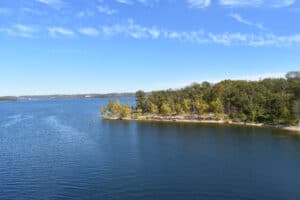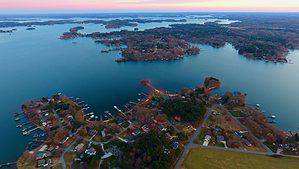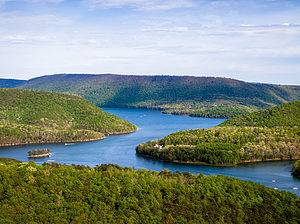Texas may be known for its hot temperature that complements its famous barbeque, but it is also home to dozens of freshwater lakes that can be utterly refreshing, especially when paired with the sultry climate. Hosting a plethora of man-made lakes, Texas offers several opportunities for freshwater fishing and lakefront vacations through its collection of lakes that range from hundreds of hectares to over a hundred thousand acres in surface area. It isn’t surprising that the state provides a home to several rivers, streams, mountains, and lowlands, as the site is the United State’s second-largest state. But if you think that all of Texas’s 268,596 square-mile-wide state only boasts of land, then you are wrong. Apart from stunning cities and ranching lands, Texas is also home to rich marine biodiversity harbored by its enormous freshwater lakes. So, which lakes in Texas are the biggest? Below, we will explore 20 of the largest lakes you can find in the state.
The 20 Biggest Lakes in Texas
1. Toledo Bend Reservoir
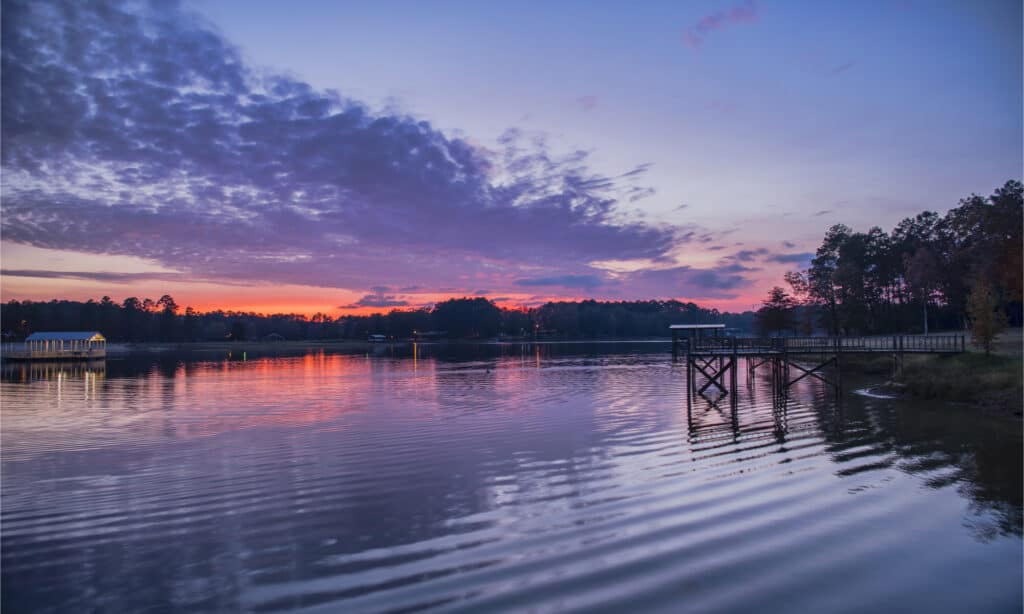
Toledo Bend Reservoir is the biggest lake in Texas, covering 289 square miles.
©Bonnie Taylor Barry/Shutterstock.com
Covering an area of 289 square miles or 185,000 acres, the Toledo Bend Reservoir is the largest lake in Texas. It is, however, only a man-made lake, also making it the state’s biggest man-made lake. Measuring a maximum depth of 34 meters, the lake also holds the largest water volume among all lakes in the state.
2. Sam Rayburn Reservoir
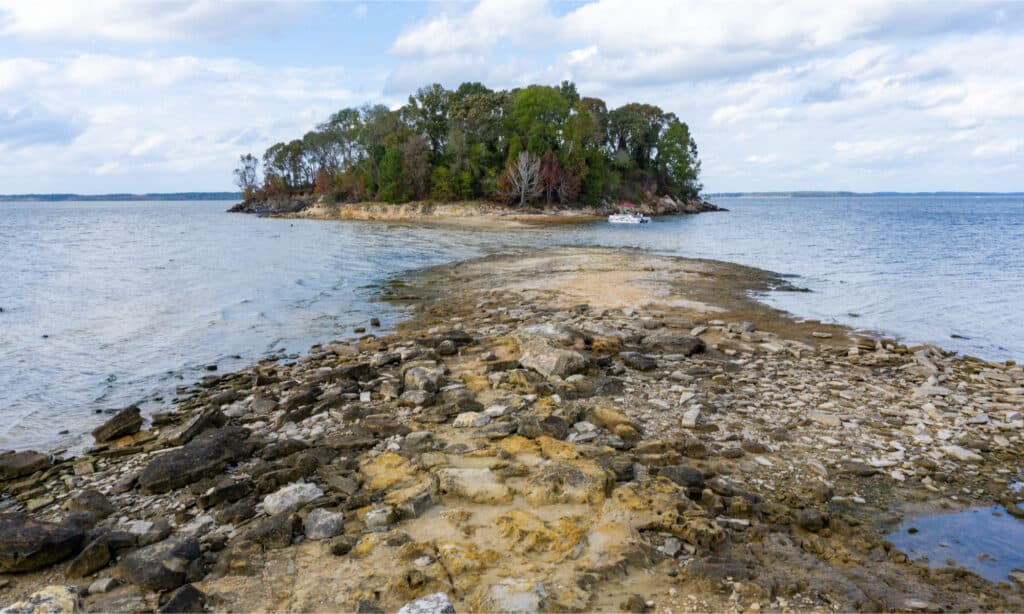
Sam Rayburn is a man-made lake and the second-biggest lake in Texas.
©Jordan Pitre/Shutterstock.com
With a total surface area of 114,500 acres or 179 square miles, the Sam Rayburn Reservoir is the state’s second-largest lake in Texas. Like the Toledo Reservoir, Sam Rayburn is also a man-made lake. The lake is famous for its several recreational activities open to the public, such as camping and fishing.
3. Falcon International Reservoir
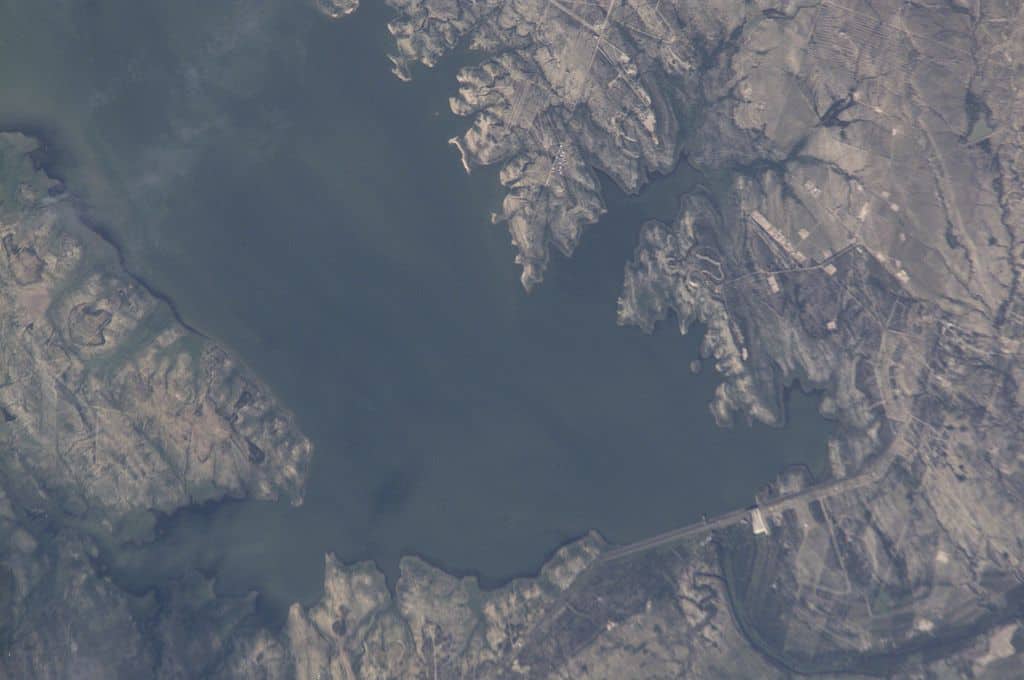
Measuring 154.63 square miles, the Falcon Lake is the third-largest in Texas.
©Image Science and Analysis Laboratory, NASA-Johnson Space Center. “The Gateway to Astronaut Photography of Earth.” / This file is in the public domain in the United States because it was created by the Image Science & Analysis Laboratory, of the NASA Johnson Space Center. NASA copyright policy states that “NASA material is not protected by copyright unless noted”. (NASA media use guidelines or Conditions of Use of Astronaut Photographs). Photo source: ISS003-E-6443. – Original
Commonly called the Falcon Lake, the Falcon Reservoir measures 154.63 square miles, making it the third-largest lake in Texas. This man-made lake hosts numerous camping spots that offer recreational activities to visitors at the Falcon State Park. It is built for the construction of the Falcon Dam to be a source of flood control, irrigation, hydroelectricity, and water conservation.
4. Lake Texoma
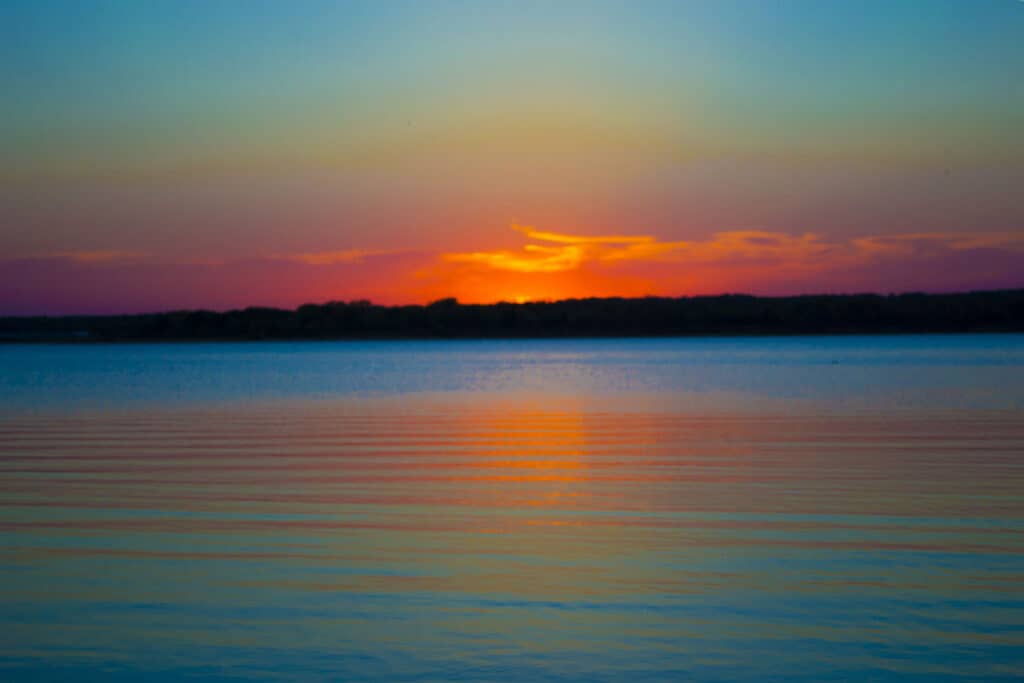
Lake Texoma is the biggest natural lake in Texas.
©iStock.com/asiantiger247
With a total surface area of 139 square miles or 36,000 acres, Lake Texoma is a highly developed lake covering Texas and Oklahoma counties. Lake Texoma hosts many small islands where about 70 fish species can be found. Some of the most abundant fish in the lake include catfish and bass. Lake Texoma is quite famous to tourists, as nearly 6 million visitors come here annually.
5. Lake Livingston
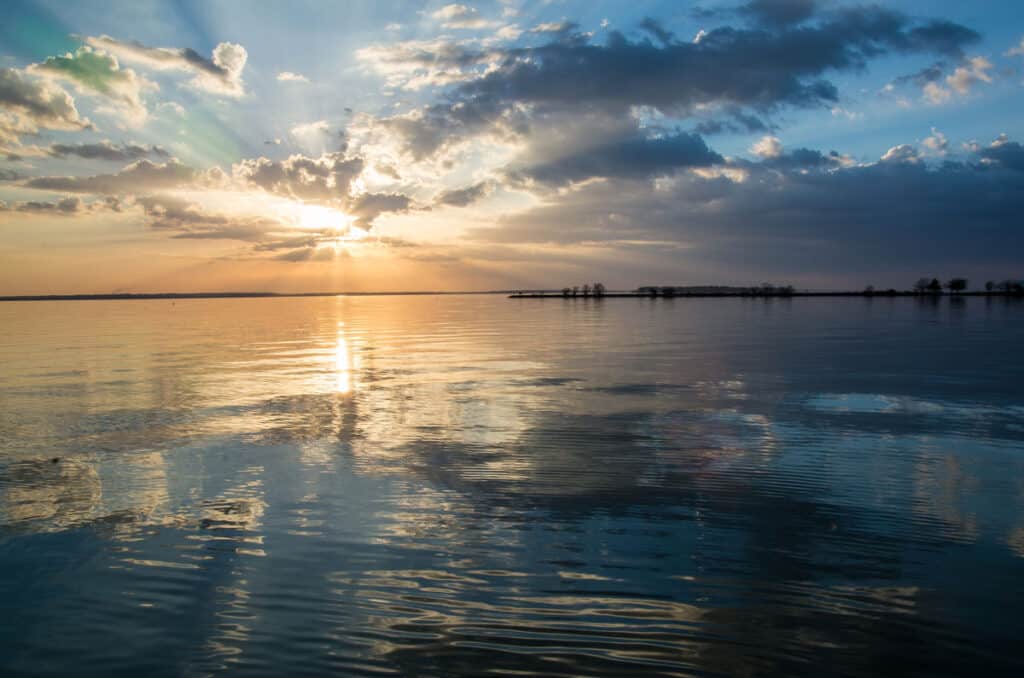
Built to provide freshwater to Texas residents, Lake Livingston is the fifth largest lake in Texas.
©Derek Jeffries/Shutterstock.com
Lake Livingston is another reservoir fully managed by the Trinity River Authority of Texas. It is located in the East Texas Piney Woods and measures 129.73 square miles. The lake is the second-largest lake in Texas that does not touch other counties or states. It was built mainly to provide freshwater to Texas residents, but it is also used for industrial, municipal, and agricultural purposes.
6. Amistad Reservoir
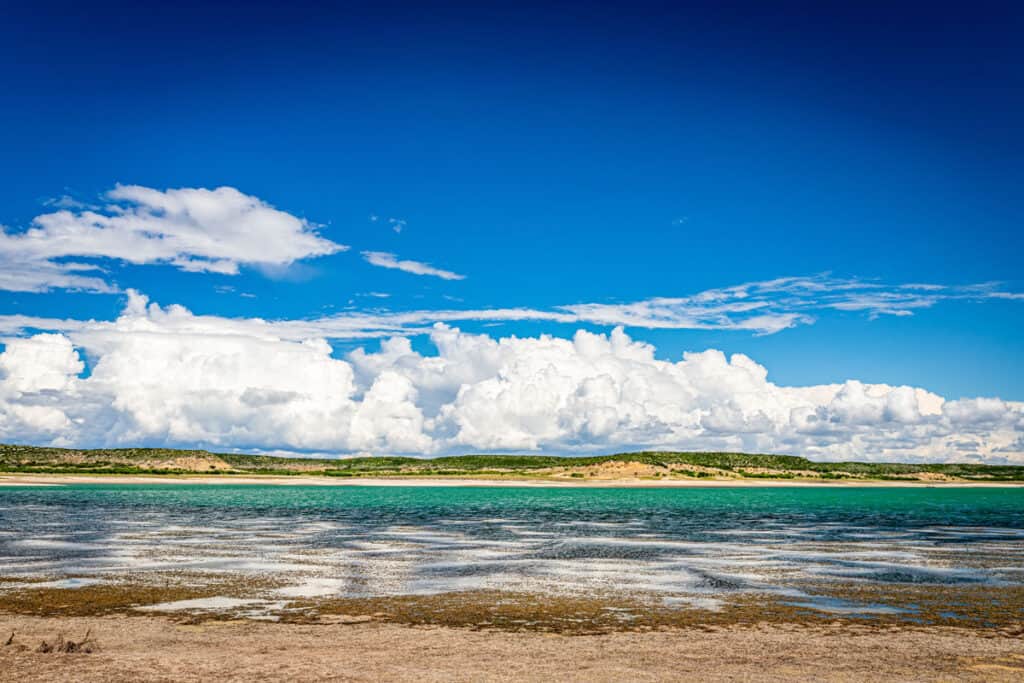
Measuring 101.4 square miles, Lake Amistad was constructed in 1969.
©iStock.com/Different_Brian
Constructed back in 1969, Lake Amistad measures 101.4 square miles and is located where Rio Grande meets the Devils River, along the Mexican border. The lake was constructed along the dam and is now famous among U.S. residents and tourists for its natural beauty. Fishing, scuba diving, swimming, and water skiing are some of the most popular recreational activities in this man-made lake.
7. Richland-Chambers Reservoir
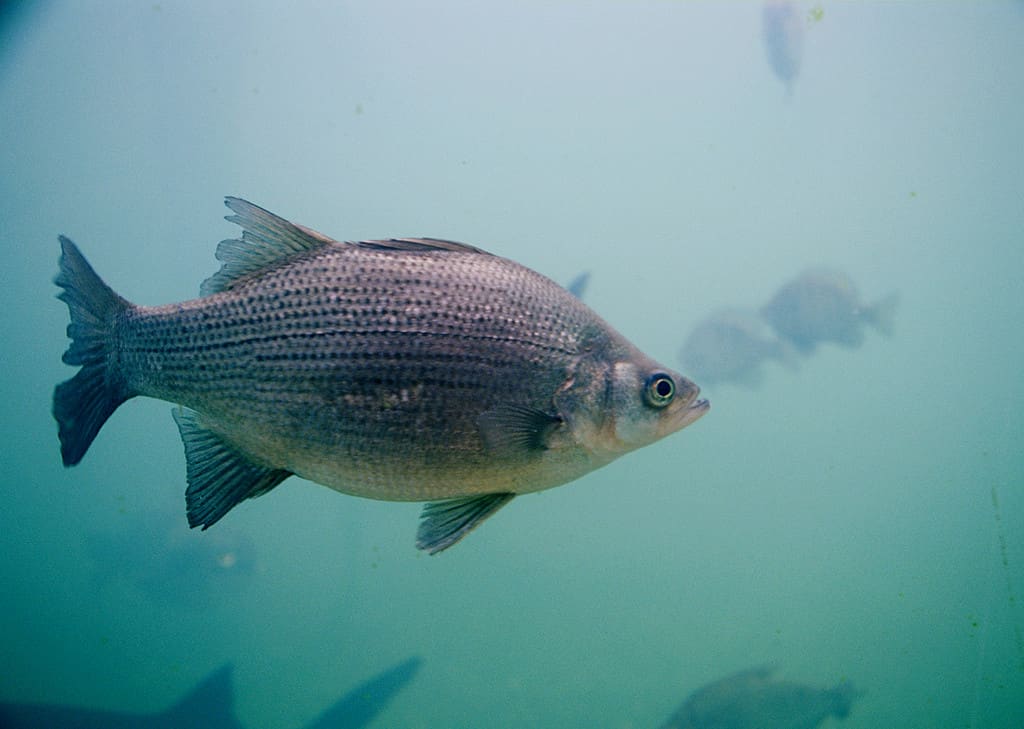
White bass is one of the many varieties of fish found in Richland-Chambers Reservoir.
Covering a total surface area of 64.63 square miles, the Richland-Chambers reservoir is one of the largest lakes in Texas both by surface area and by water volume. It is also the third-biggest inland reservoir that provides rich fishing opportunities. Some of the most prominent fish caught in the lake include carp, crappie, catfish, bass, and smallmouth buffalo.
8. Lake Tawakoni
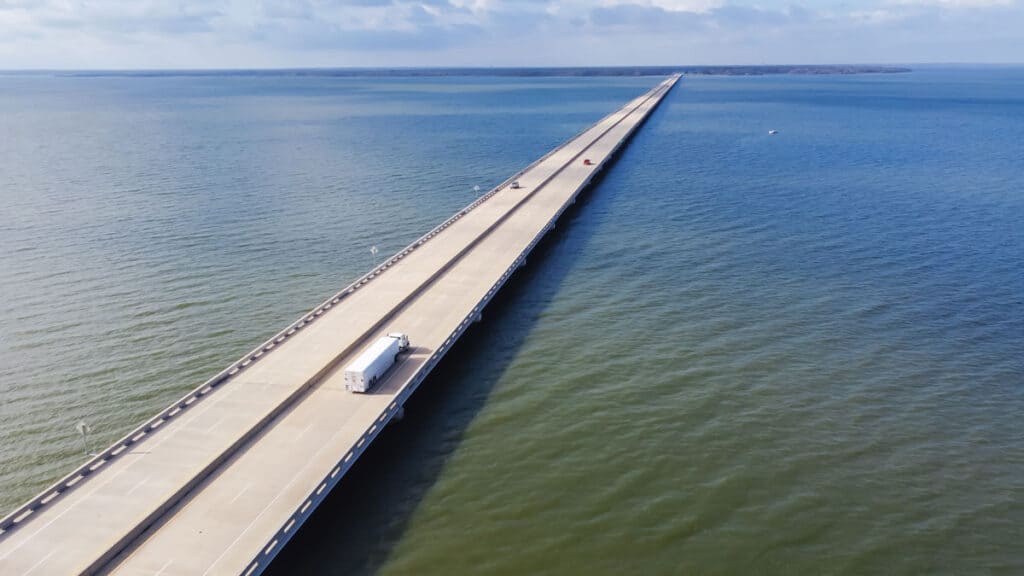
Surrounded by sandy beaches, Lake Tawakoni measures 57.33 square miles.
©iStock.com/TrongNguyen
If you are looking for a freshwater lake surrounded by sandy beaches, Lake Tawakoni is the perfect place! Measuring 57.33 square miles or 37,879 acres, this reservoir in Northeast Texas offers an excellent getaway for its recreational activities such as swimming and boating. Five miles from the lakeshore, you can find sandy beaches that often pique tourists’ interests.
9. Cedar Creek Reservoir
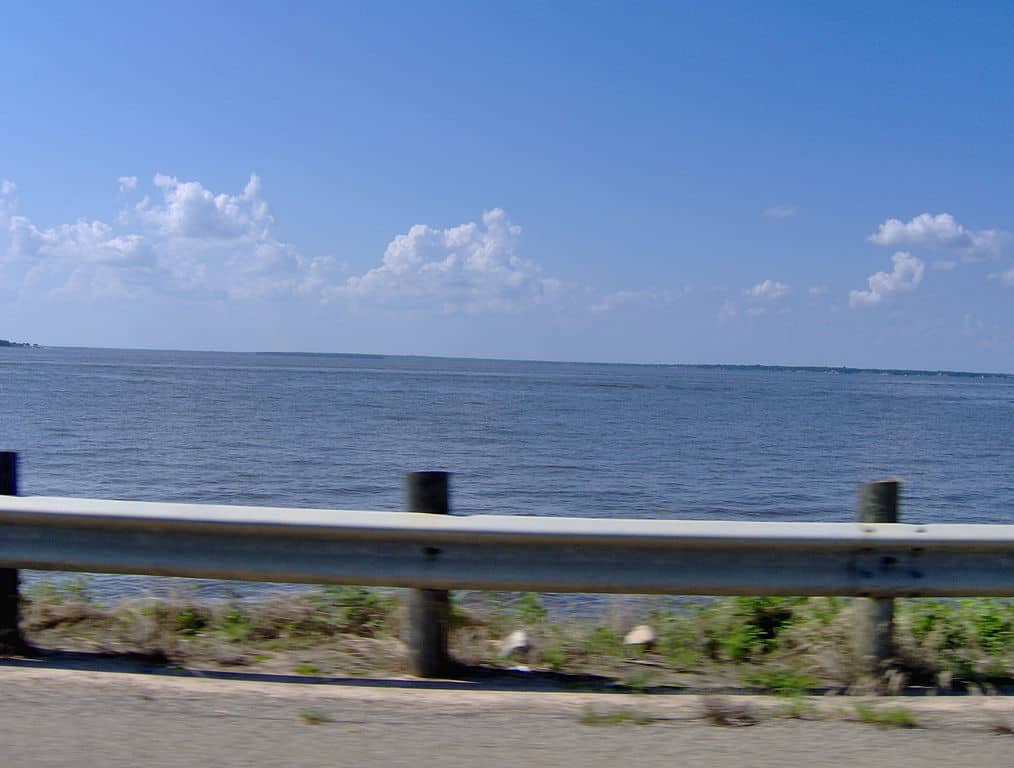
Cedar Creek Reservoir covers a total surface area of 51 square miles.
©JWinTX (talk) (Uploads) / Creative Commons – Original / License
Another reservoir makes it to the list as Cedar Creek Reservoir snags the 9th spot on the biggest lakes in Texas. Covering a total surface area of 51 square miles, the lake has several large coves perfect for fishing, swimming, and skiing. This 32,000-acre reservoir is built on Cedar Creek, flowing down to Trinity River through a gated spillway.
10. Lake Lewisville
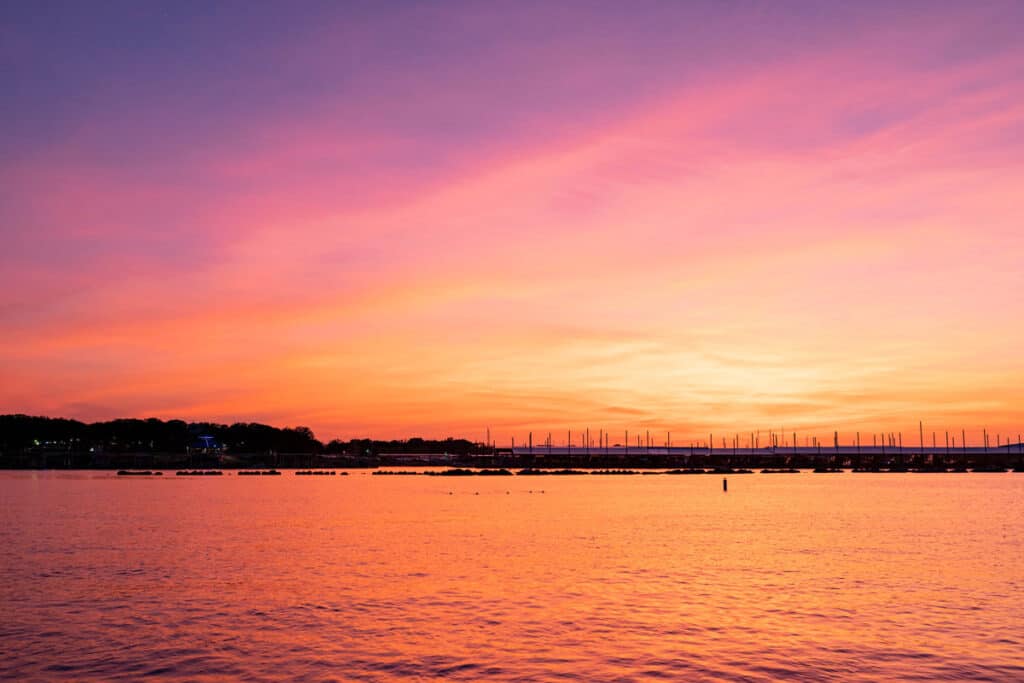
Located in North Texas, Lake Lewisville covers a surface area of nearly 12,000 acres.
©ZeKing/Shutterstock.com
Measuring 46.25 square miles, Lake Lewisville makes it to the top 10 largest lakes in Texas. Lake Lewisville is a reservoir located in North Texas and was initially engineered as Lake Dallas in 1927. Between the 1940s and 1950s, the lake was expanded and renamed Lewisville. Covering a surface area of nearly 12,000 acres, the lake boasts an impressive shoreline with numerous camping facilities, restaurants, golf courses, and lodges.
11. Lake Fork
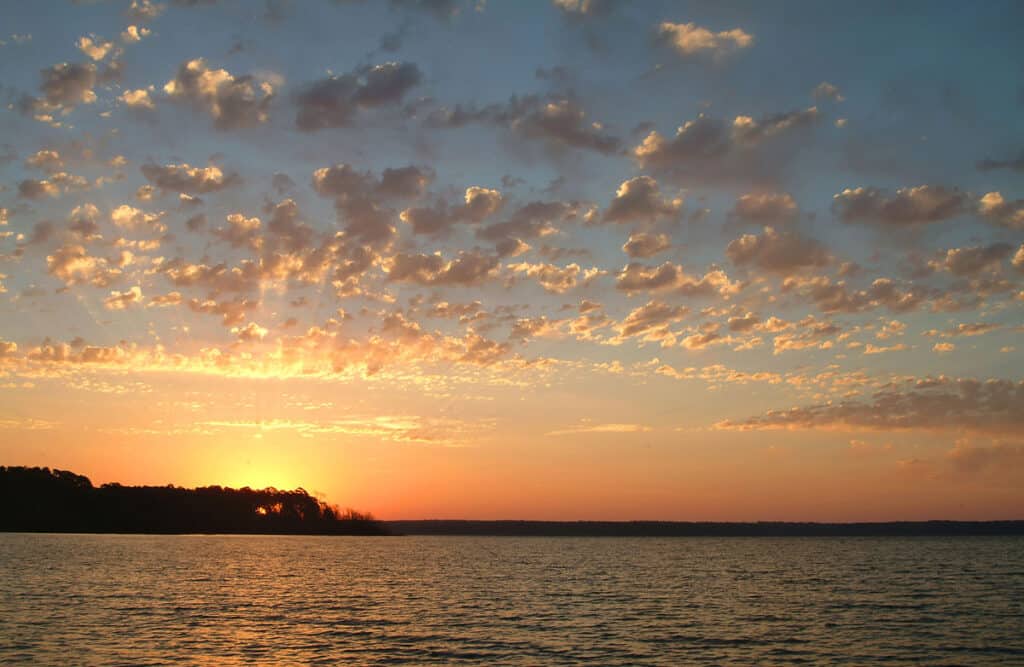
Lake Fok was built to save water and it expands to 43.28 square miles.
©Steve Price/Shutterstock.com
Located in Texas’s Wood, Hopkins, and Rains counties, the Lake Fork Reservoir expands to 43.28 square miles. The reservoir is one of the main tributaries of the Sabine River and is owned by the Sabine River Authority of Texas. Lake Fork was built to save water and for other municipal and industrial purposes. The water in the lake is moderately clear, making it a good spot for fishing. Some fish species inhabiting the lake include white bass, sunfish, largemouth bass, white and black crappie, and channel catfish.
12. Lake Palestine
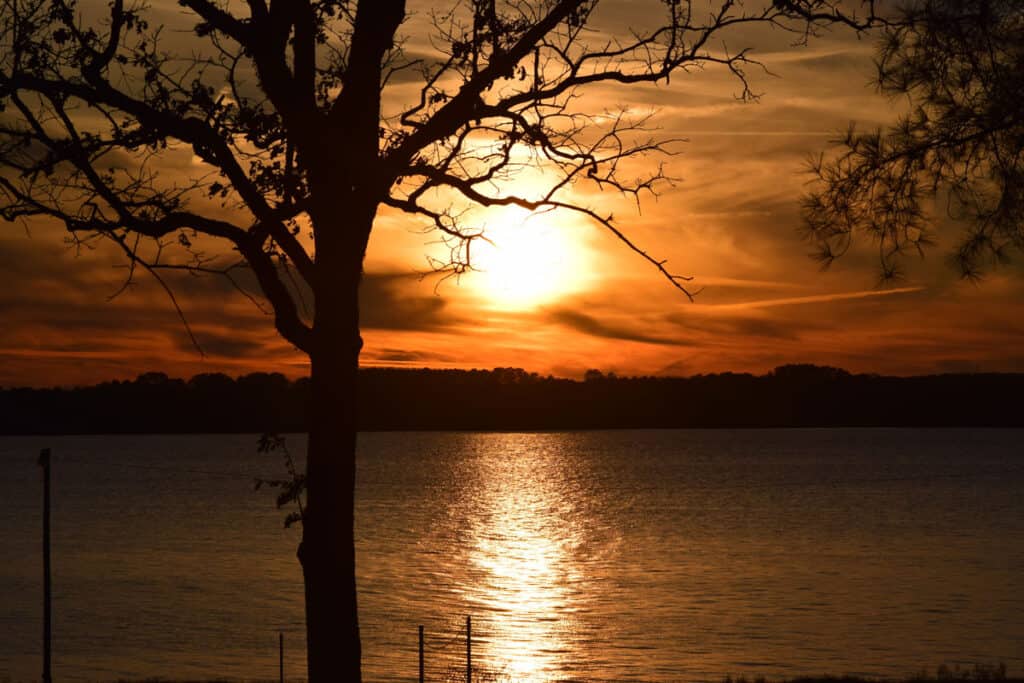
Having a total surface area of 40 square miles, Lake Palestine is a freshwater reservoir in northeast Texas.
©Matthew Raybin/Shutterstock.com
Lake Palestine, a freshwater reservoir located in northeast Texas, has a total surface area of 40 square miles. The lake is famous for its largemouth bass tournaments, so it offers vast opportunities for the fishing industry. Like other reservoirs, Lake Palestine was built for recreational, municipal, and industrial purposes.
13. Caddo Lake
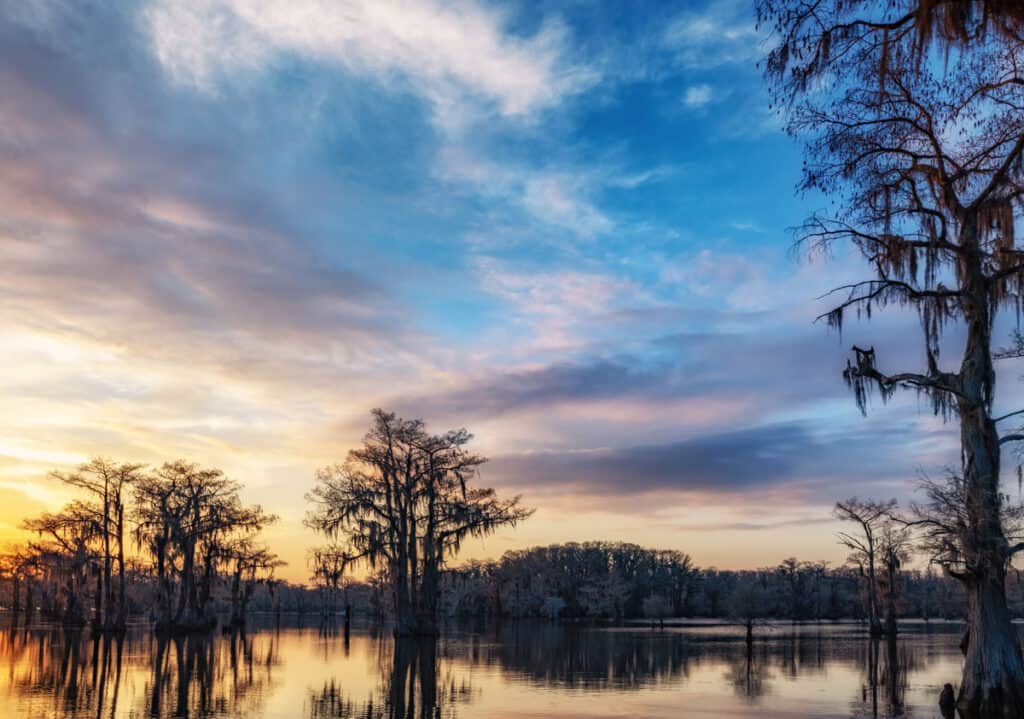
Measuring 39.7 square miles, Caddo Lake’s wetland has one of the biggest flooded cypresses in the U.S.
©iStock.com/westtexasfish
Caddo Lake is a lake and bayou or wetland that borders Texas and Louisiana. It measures 39.7 square miles or 25,400 acres. The lake used to be a settlement for the Southeastern culture of Native Americans called Caddoans until the 19th century. The lake’s wetland has one of the biggest flooded cypresses in the United States, which is why the area is internationally protected. Incredibly, Caddo Lake is considered the only natural lake in Texas, and while originally natural, today has a permanent dam installed.
14. Lake Ray Hubbard
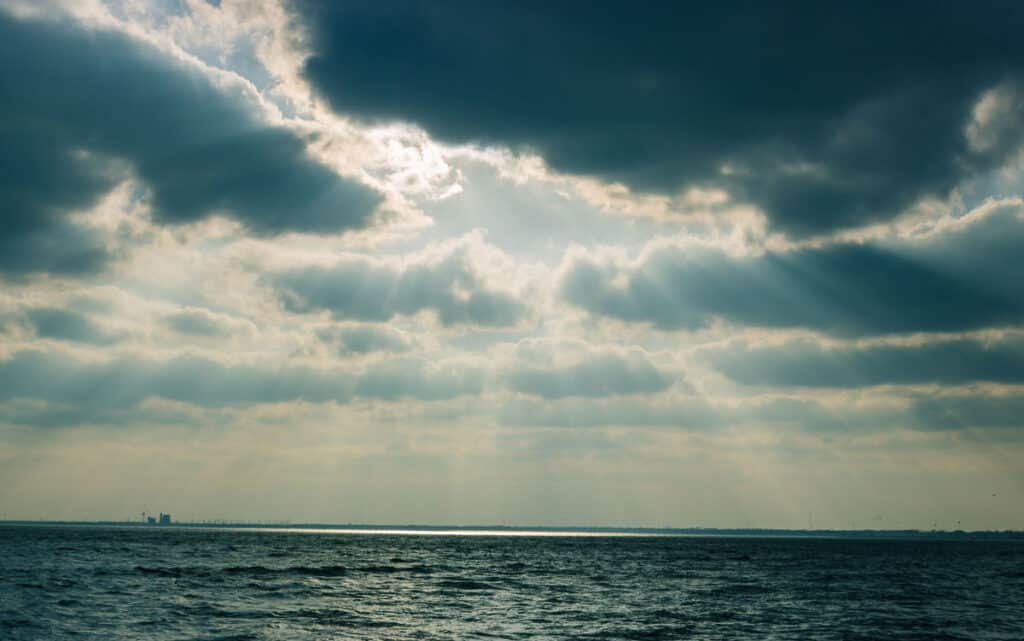
The largest lake within the city of Dallas is Lake Ray Hubbard.
©Jordan Gooch/Shutterstock.com
Lake Ray Hubbard covers a total surface area of 35.54 square miles or 22,745 acres. The lake is the largest lake you can find within the city of Dallas and currently has a full storage capacity of 600 million cubic meters. Fishing is the activity that makes the lake famous, and if you are looking for a great fishing spot in Dallas, then this lake will most likely be the first one to come up.
15. Lake Buchanan
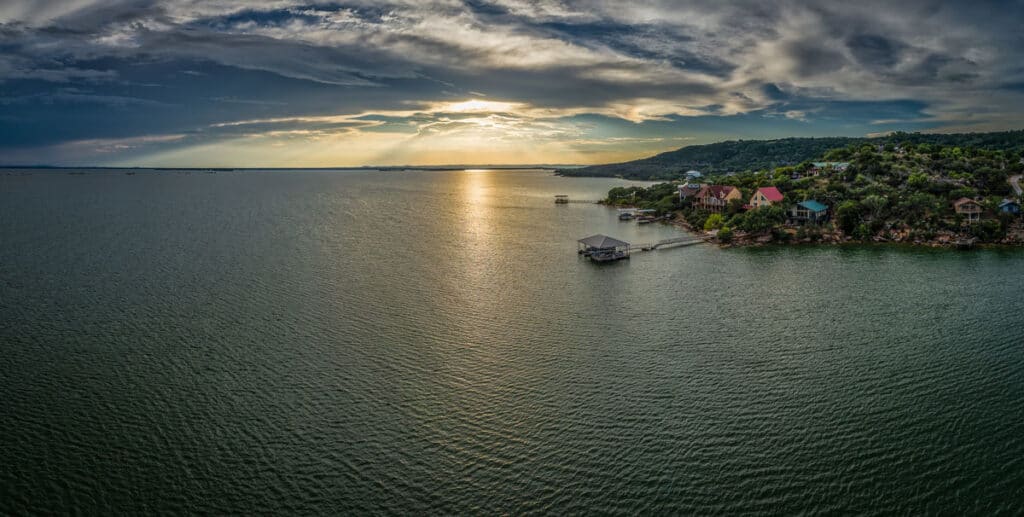
Lake Buchanan boasts a vast surface area of 34.9 square miles.
©iStock.com/Ryan Conine
Apart from being one of the deepest lakes in Texas, Lake Buchanan also boasts a vast surface area of 34.9 square miles. Although man-made, Lake Buchanan consists of granite gravel shores ideal for swimming and sunbathing. The site is also clean, making it an excellent spot for camping and hiking.
16. Lavon Lake
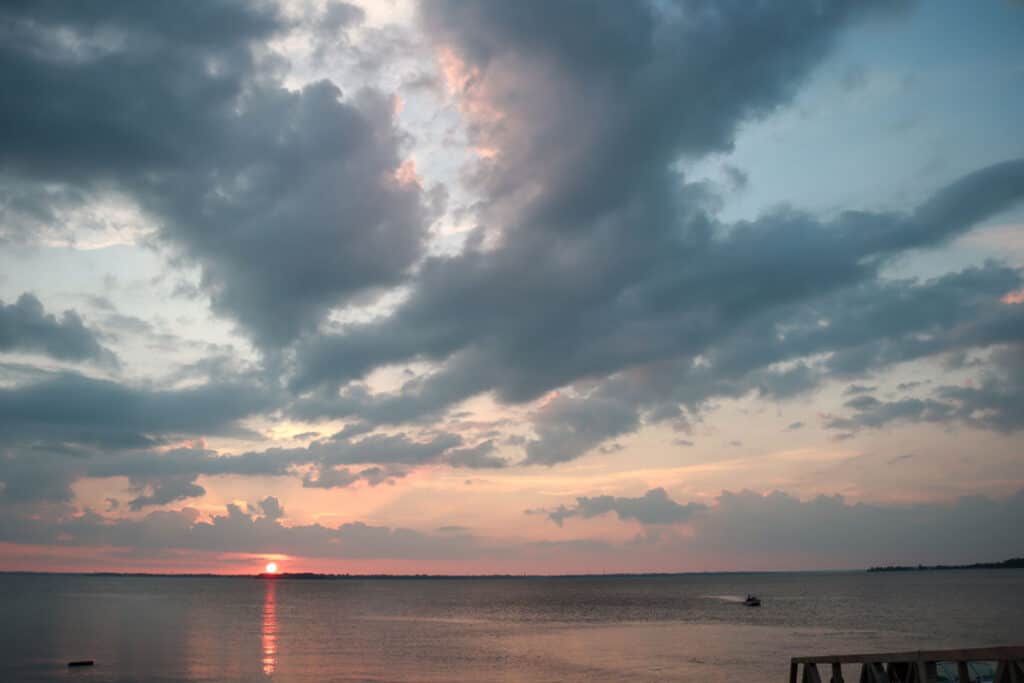
Lavon Lake, with a surface area of 33.47 square miles, serves as a water source for thousands of residents in North Texas.
©iStock.com/Nina Nelson
With a surface area of 33.47 square miles or 21,400 acres, Lavon Lake serves as a water source and flood control for thousands of residents settling across Northern Texas. The freshwater reservoir was also built for recreational purposes and was initially called the Lavon Reservoir.
17. Lake Conroe
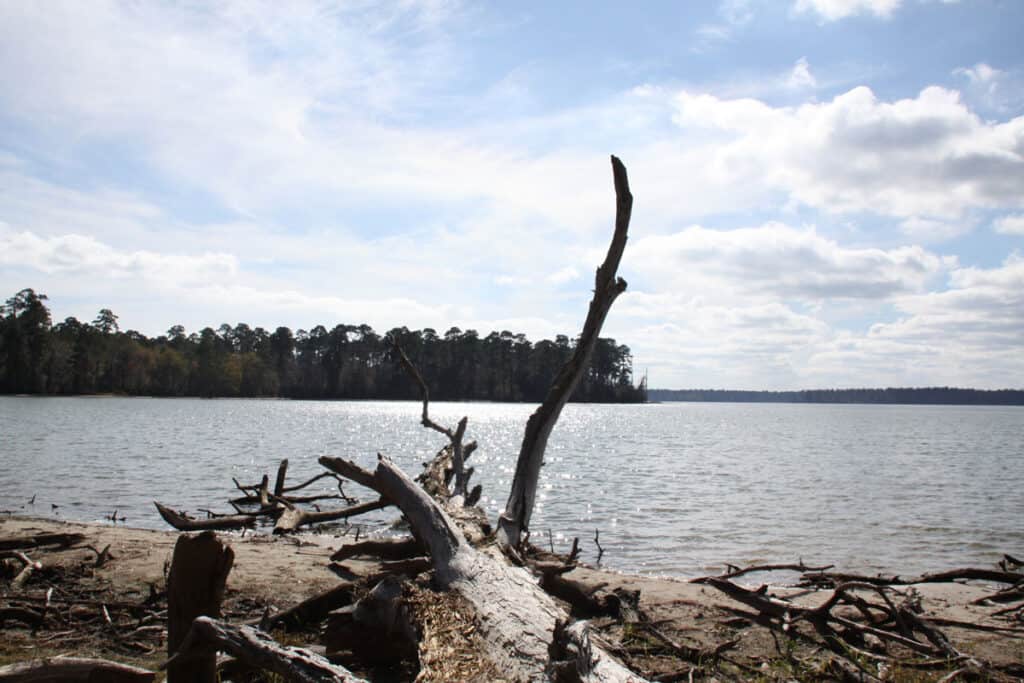
Lake Conroe is the 17th biggest lake in Texas.
©iStock.com/becky seiler
Covering 32.81 square miles, Lake Conroe is a beautiful lake surrounded by hills and trees. Apart from other common activities done in most lakes, Lake Conroe is a stunning view during a road drive because of the diverse web of animals inhabiting the area. There are also plenty of marinas that offer boat rentals to discover and explore the lake.
18. Possum Kingdom Lake
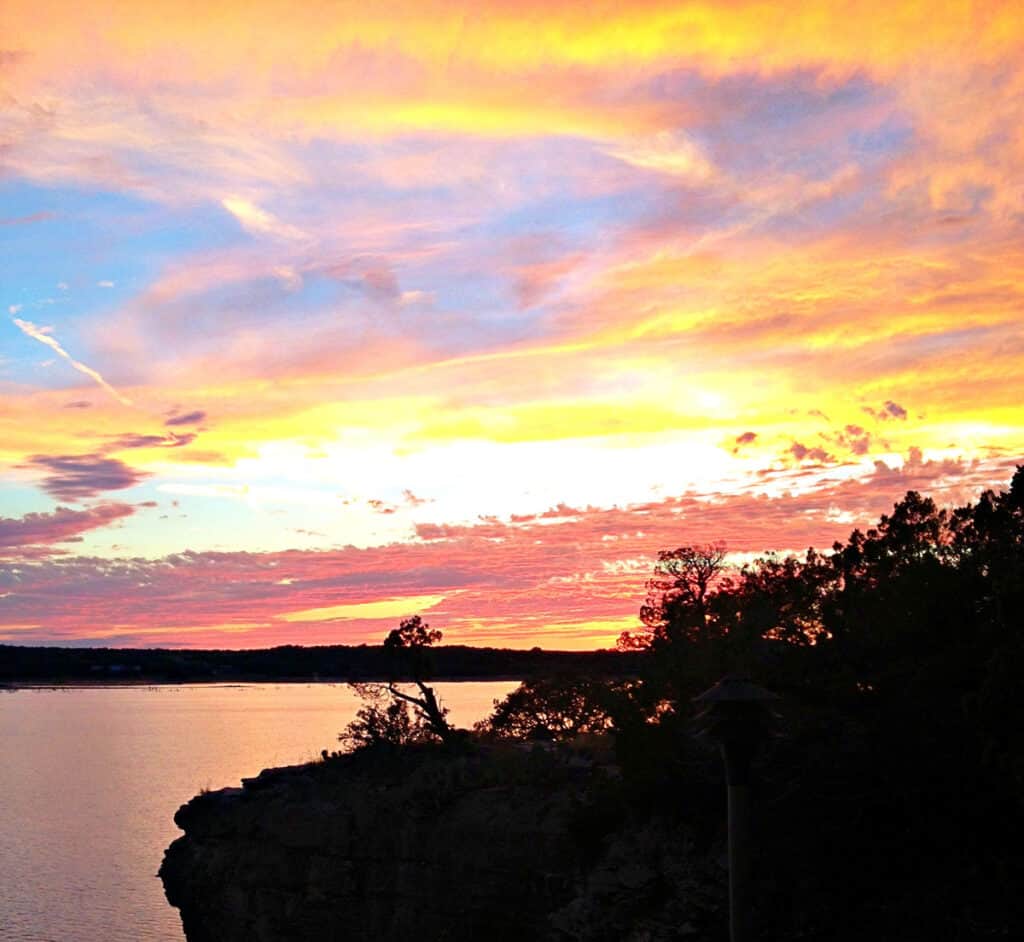
Possum
Kingdom Lake is the 18th biggest lake in Texas.
©iStock.com/Daniel D Foy
The Possum Kingdom Lake is a 30.93-square mile or 17,000-acre reservoir on the Brazos River that is seated beyond 400 meters above sea level. It is a picturesque lake located primarily in Palo Pinto County that hosts a unique ecosystem. The lake is famous for its watersports like fishing and boating and its surrounding rolling hills and clear water.
19. Lake Travis
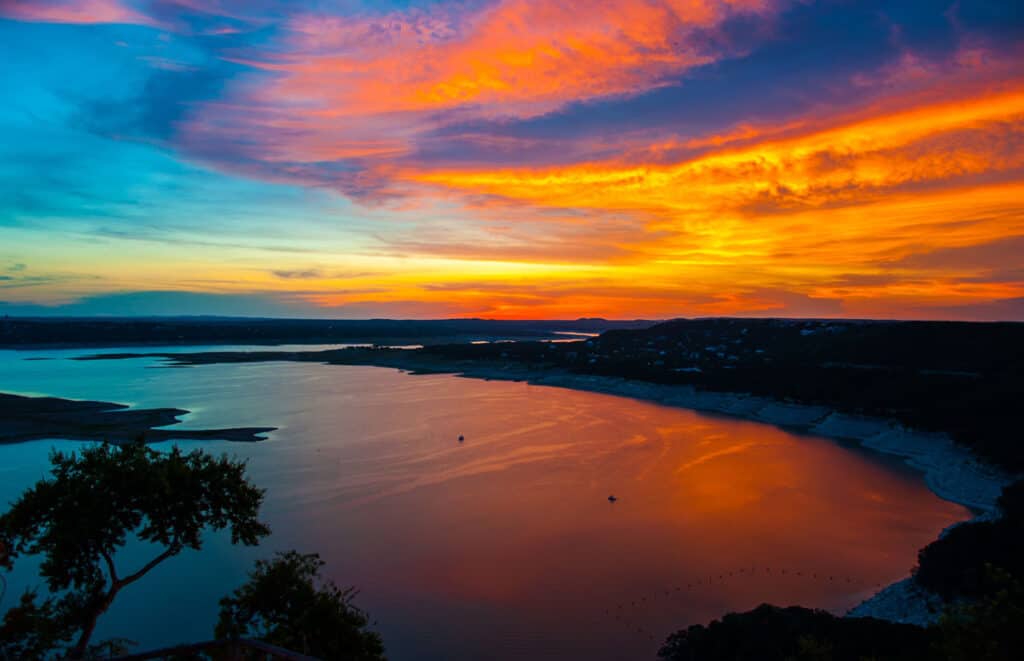
Seated on the Colorado River, Lake Travis measures 29.58 miles in surface area.
©iStock.com/RoschetzkyIstockPhoto
Lake Travis is a reservoir seated on the Colorado River, built mainly for flood control. It measures 29.58 square miles in surface area or 18,900 acres. The lake also boasts an extensive shoreline that measures up to 400 kilometers. Though man-made, Lake Travis is home to various fish species like sunfish, bass, and catfish. Tourists also visit it annually for recreational activities such as scuba diving, swimming, and boating.
20. Lake O’ the Pines
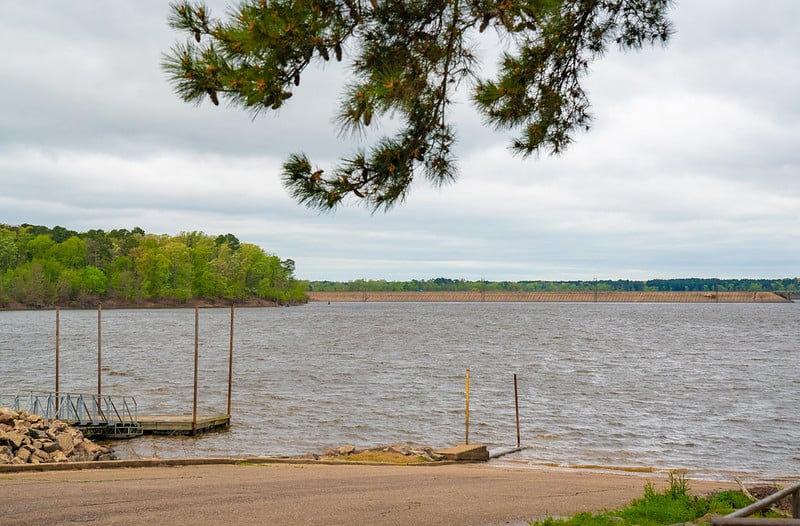
Lake O’ the Pines covers a total surface area of 29.19 square miles.
Lake O’ the Pines is named after its beautiful surroundings that boast many beautiful pine trees. Covering a total surface area of 29.19 square miles or 18,680 acres, this reservoir on Big Cypress Bayou is a well-known spot for fishing. Various fish species can be found in the lake’s depths, including chain pickerel, bass, and catfish.
Summary of the 20 Biggest Lakes in Texas
Here’s a recap of the 20 largest lakes in the state of Texas and their total surface area:
| Rank | Lake | Size |
|---|---|---|
| 1 | Toledo Bend Reservoir | 289 square miles |
| 2 | Sam Rayburn Reservoir | 179 square miles |
| 3 | Falcon International Reservoir | 154.63 square miles |
| 4 | Lake Texoma | 139 square miles |
| 5 | Lake Livingston | 129.73 square miles |
| 6 | Amistad Reservoir | 101.4 square miles |
| 7 | Richard-Chambers Reservoir | 64.63 square miles |
| 8 | Lake Tawakoni | 57.33 square miles |
| 9 | Cedar Creek Reservoir | 51 square miles |
| 10 | Lake Lewisville | 46.25 square miles |
| 11 | Lake Fork | 43.28 square miles |
| 12 | Lake Palestine | 40 square miles |
| 13 | Caddo Lake | 39.7 square miles |
| 14 | Lake Ray Hubbard | 35.54 square miles |
| 15 | Lake Buchanan | 34.9 square miles |
| 16 | Lavon Lake | 33.47 square miles |
| 17 | Lake Conroe | 32.81 square miles |
| 18 | Possum Kingdom Lake | 30.93 square miles |
| 19 | Lake Travis | 29.58 square miles |
| 20 | Lake O’ the Pines | 29.19 square miles |
Honorable Mentions: Biggest Lakes in Texas
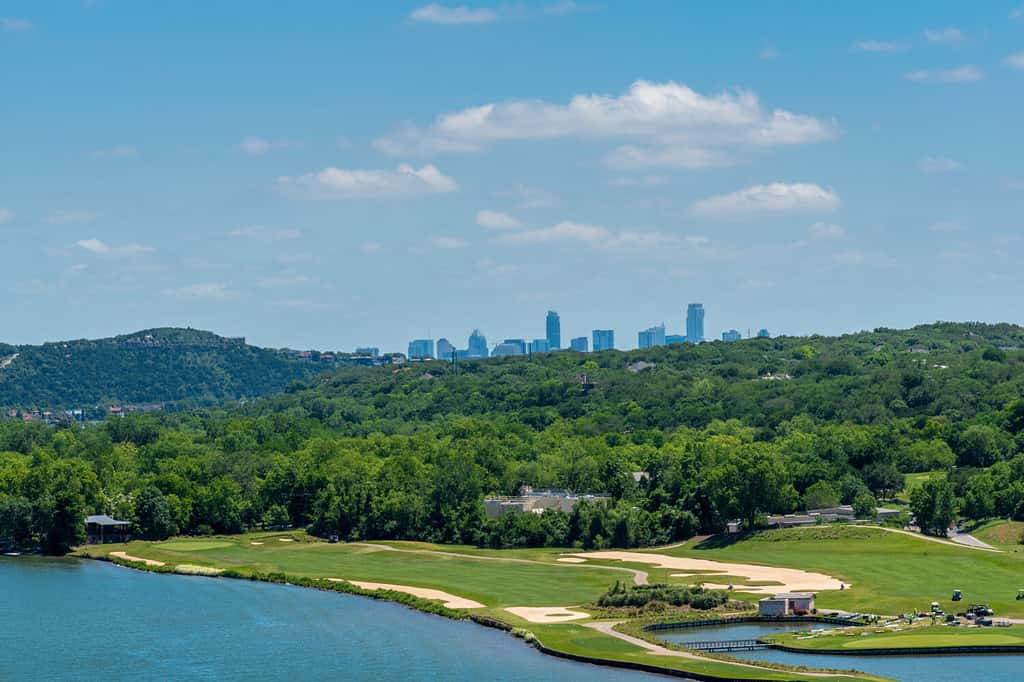
Lake Austin has 21,000 acre-feet and covers a surface area of 1,830 acres.
©ARTCHIVE/Shutterstock.com
While we explore some of the 20 biggest lakes that can be discovered in Texas, however, here are a few other large lakes that didn’t make our original list.
Here are some other big lakes in Texas:
- Lake Granbury
- Lake Whitney
- Lake Austin
Lake Granbury is located near Granbury, Texas. It is a reservoir in North Texas. This lake came into existence in 1969 and forms one of the three lakes that impound the Brazos River. The lake is about 35.5 miles long.
In 1951, Lake Whitney was formed by the damming of the Brazos River by the U.S. Army Corps of Engineers. The area is about 237 square miles and has more than 225 miles of shoreline, this lake can store over 2 million acre-feet of water when at its flood level.
Lake Austin or previously known as Lake McDonald, is a reservoir on the Colorado River located in Austin, Texas. This reservoir has about 21,000 acre-feet and covers a surface area of 1,830 acres, with an uncontrolled spillway crest elevation resting at 492.8 feet above sea level.
The photo featured at the top of this post is © Roschetzky Photography/Shutterstock.com
Thank you for reading! Have some feedback for us? Contact the AZ Animals editorial team.




